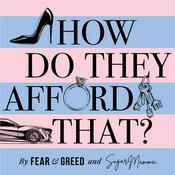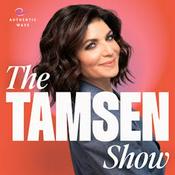297 episodes

295: Wine Law Essentials: Contracts, TTB, Social Media & More
01/1/2026 | 40 mins.
Legal oversights can cost wine brands dearly, but with the right guidance, many are entirely preventable. Lindsay Zahn, Managing Partner of Lindsay Zahn P.C. Alcoholic Beverage Law Firm, breaks down the top four legal pitfalls wineries and wine brands must avoid. From building solid contracts and understanding who owns what, to navigating TTB labeling rules, producing non-alcoholic wines, and staying compliant with social media advertising laws, this episode arms you with practical knowledge to reduce risk and protect your business from penalties. Resources: 187: Labor and Employment Law Tips from a Lawyer Code of Federal Regulations - Food Labeling Code of Federal Regulations – Labeling and Advertising of Wine Dealcoholized Wine and Malt Beverages - Labeling Guidance for Industry: Food Labeling Guide Lindsey Zahn Vineyard Team Programs: Juan Nevarez Memorial Scholarship - Donate Online Courses – DPR & CCA Hours SIP Certified – Sustainable, Seriously Sustainable Ag Expo – The Premiere Winegrowing Event Vineyard Team – Become a Member

294: Rooted in Community: Winery Stories of Generosity | Marketing Tip Monday
22/12/2025 | 3 mins.
Foxen and Niner show impactful ways to weave generosity into everyday business. As you plan for 2026, think about the unique ways your brand can meaningfully engage with your local community. Then, share your team's participation, spotlight the organizations you support, and tell the stories that highlight your values. Resources: *** Tell Your Sustainable Story Online Course *** Apply for SIP Certified Wine Likely Story Strategies Marketing Tips eNewsletter Sustainable Story Worksheet Vineyard Team Programs: Juan Nevarez Memorial Scholarship - Donate SIP Certified – Show your care for the people and planet Sustainable Ag Expo – The premiere winegrowing event of the year Vineyard Team – Become a Member

293: How Solar Panels Can Improve Vine Resilience and Wine Balance
18/12/2025 | 42 mins.
Rising temperatures and erratic weather accelerate ripening, spread disease faster, and shift sugar, alcohol, and acidity levels. All of which threaten wine quality and style. At Geisenheim University, Dr. Manfred Stoll is testing "vitivoltaics": semi-transparent, trackable solar panels installed above vines. The system moderates heat, radiation, and extreme weather, while improving young vine establishment and water infiltration. Beyond the vineyard, this renewable energy can power everything from irrigation pumps to EV charging stations for wine tasting guests. Resources: 281: How Rootstock Impacts Vine Drought Tolerance and Longevity 283: Developing Cold-Hardy Grapes with 23andMe Technology Agrivoltaics in the Vineyard Agrivoltaics in wine growing areas Are These Smart Solar Panels the Future of Sustainable Vineyards? Assessing the economic performance of agrivoltaic systems in vineyards - framework development, simulated scenarios and directions for future research Grape Growth and Berry Development Under the Agrivoltaic System in Vineyards Manfred Stoll Soaking Up the Sun: Agrivoltaics Build Resiliency into Producers' Operations in Rio Grande Valley Vineyard Team Programs: Juan Nevarez Memorial Scholarship - Donate Online Courses – DPR & CCA Hours SIP Certified – Show your care for the people and planet Sustainable Ag Expo – The premiere winegrowing event of the year Vineyard Team – Become a Member

292: Testing Vinifera vs. Hybrids: Which Survives Climate Stress Better?
04/12/2025 | 40 mins.
Will hybrid grapes help vineyards survive climate change? Professor Karine Pedneault of the Université du Québec en Outaouais explores this question through trials that expose grapevines to drought and heat stress. Testing both vinifera and hybrid varieties, her research measured plant water flow and metabolic responses to determine resilience. While hybrids still carry a stigma around flavor, they showed promising resistance, raising the potential to reduce fungicide use by up to half and adapt more sustainably to extreme weather scenarios. Resources: 223: New Decision Support System for Irrigation Efficiency 213: High Resolution Data from Space Helps Farmers Plan for Climate Change Karine Pedneault Karine Pedneault – Google Scholar Karine Pedneault - Instagram Karine Pedneault - LinkedIn Karine Pedneault – Research Gate Metabolic response of vitis vinifera and interspecific vitis sp. varieties to heat stress, water deficit and combined stress, using a metabolomic approach The organic vineyard as a balanced ecosystem: Improved organic grape management and impacts on wine quality Vineyard Team Programs: Juan Nevarez Memorial Scholarship - Donate Online Courses – DPR & CCA Hours SIP Certified – Show your care for the people and planet Sustainable Ag Expo – The premiere winegrowing event of the year Vineyard Team – Become a Member

290: Fighting Powdery Mildew with UVC Light
20/11/2025 | 27 mins.
With fungicide resistance on the rise, grape growers are looking for new ways to manage powdery mildew. Lexi McDaniel, Viticulture Extension Specialist at North Carolina State University, explores the science behind using UVC light to combat this grapevine disease by directly disrupting the DNA bonds needed for replication. She shares insights from her trials, including why the light must be applied at night, how often it needs to pass through the vineyard, and how this technique compares to traditional fungicide programs in both cost and effectiveness. Resources: 117: Grapevine Mildew Control with UV Light 197: Managing the Sour Rot Disease Complex in Grapes 219: Intelligent Sprayers to Improve Fungicide Applications and Save Money 235: Battling Fungicide Resistance with Glove Sampling 266: Soft Pesticide Trial: Powdery Mildew, Downy Mildew, Botrytis, and Sour Rot Field-Scale Ultraviolet-C Light Applications to Manage Grapevine Powdery Mildew Grapevine Powery Mildew UV-C Information Introducing UVC applications for powdery mildew control in grapevines Lexie McDaniel North Carolina State Extension Ultraviolet-C (UVC) Light Can Be a Powerful Tool Against Grapevine Powdery Mildew Vineyard Team Programs: Juan Nevarez Memorial Scholarship - Donate Online Courses – DPR & CCA Hours SIP Certified – Show your care for the people and planet Sustainable Ag Expo – The premiere winegrowing event of the year Vineyard Team – Become a Member
More Education podcasts
Trending Education podcasts
About Sustainable Winegrowing
Listen to Sustainable Winegrowing, The Mel Robbins Podcast and many other podcasts from around the world with the radio.net app

Get the free radio.net app
- Stations and podcasts to bookmark
- Stream via Wi-Fi or Bluetooth
- Supports Carplay & Android Auto
- Many other app features
Get the free radio.net app
- Stations and podcasts to bookmark
- Stream via Wi-Fi or Bluetooth
- Supports Carplay & Android Auto
- Many other app features


Sustainable Winegrowing
download the app,
start listening.





































